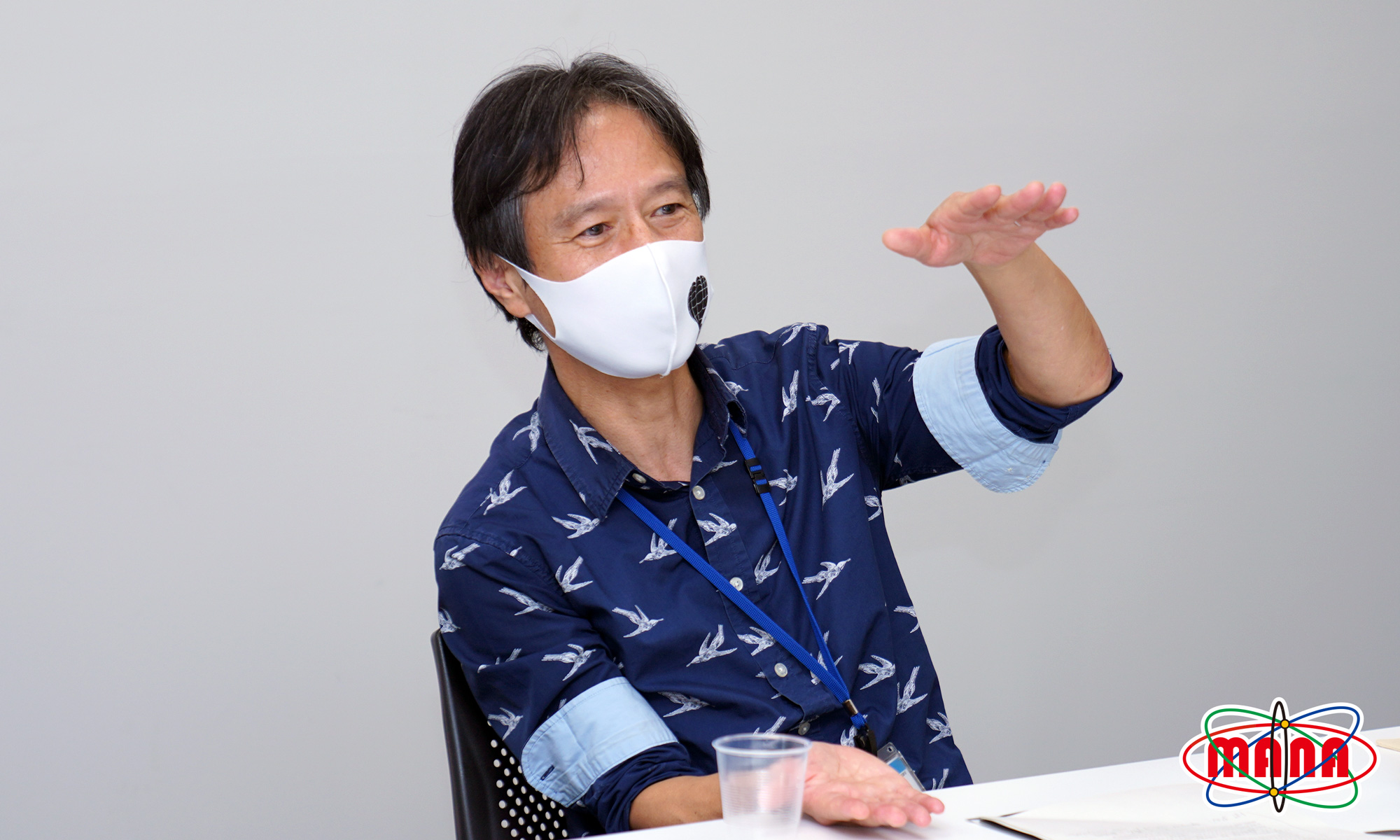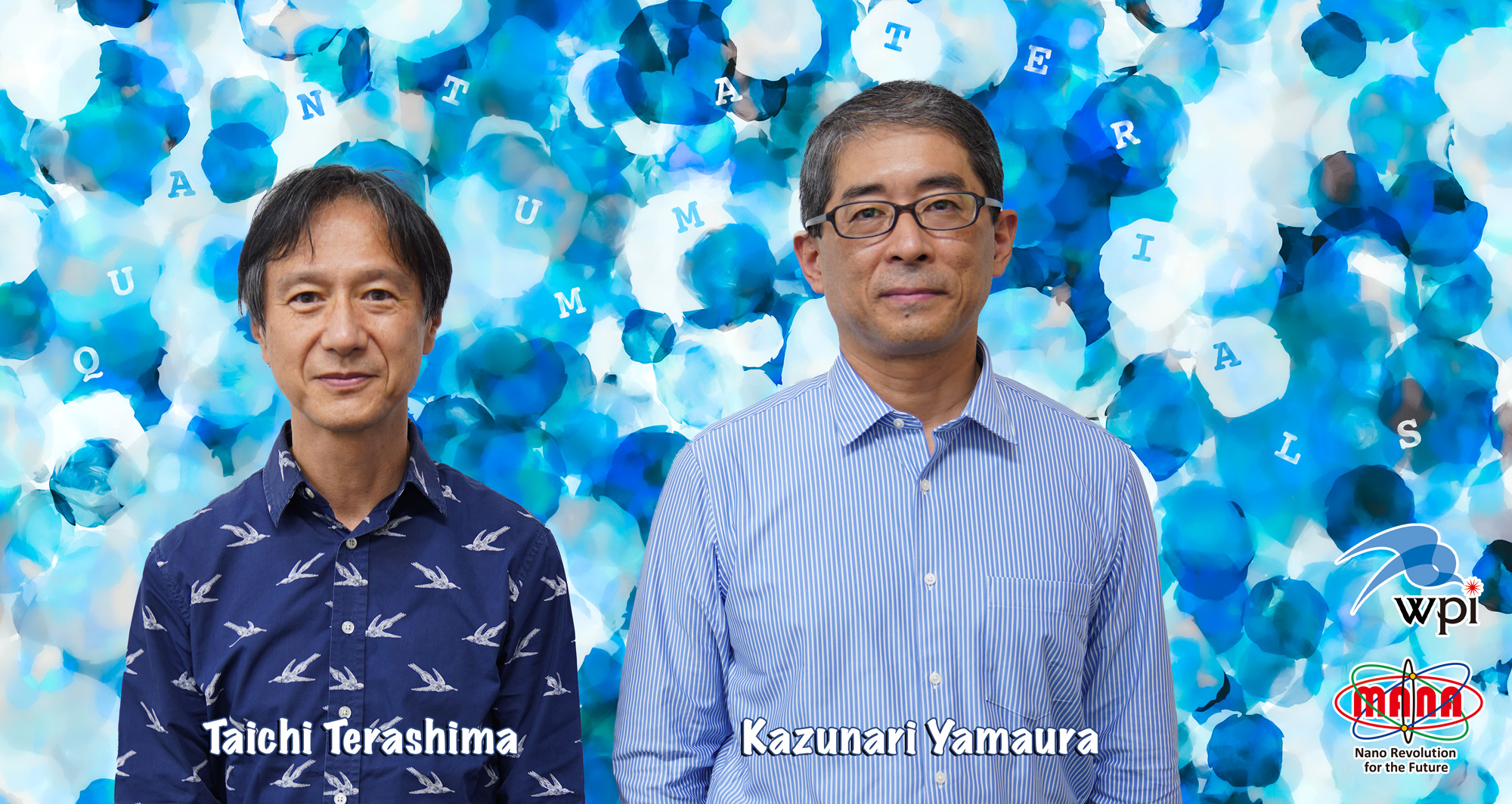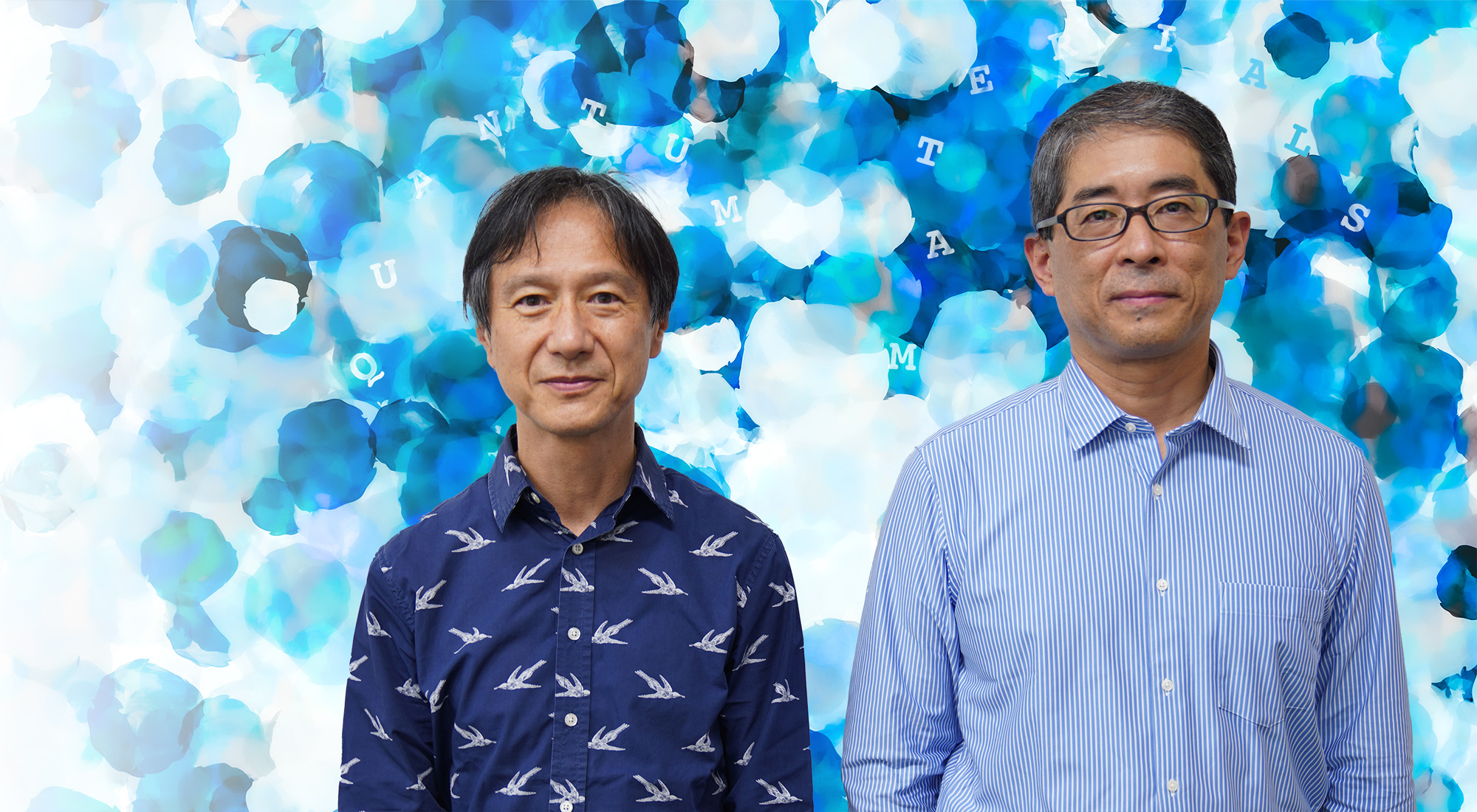An interview with MANA scientists in NIMS’ Quantum Materials Project
Kazunari YAMAURA
Group Leader, Nano-Materials Field, Quantum Solid State Materials Group, WPI-MANA
Taichi TERASHIMA
Group Leader, Nano-System Field, Quantum Material-Properties Group, WPI-MANA
The NIMS Quantum Materials Project is MANA’s newly formed group for research into creating and exploiting quantum materials. Recently the Japanese government selected a number of priority research projects and has directed funds toward them.
One of the fields of interest is quantum technology -- quantum computing, quantum information and so on -- related to the very small physical world, the quantum domain. MANA spoke to two scientists of the NIMS project.
− First of all, could you describe your research for us?
YAMAURA: I am focusing on developing quantum materials using high-temperature and high-pressure synthesis methods. These methods are advantageous to develop materials and properties in general. One target is to develop the quantum properties of polarized metals.
Since joining MANA, I have been researching polar metals, a kind of dielectric material. They were discovered a long time ago, and were considered as an unusual theoretical material. But recently they are sparking interest again and now we are thinking that they could be a new category of quantum material. The polarization can be controlled, oriented this way or that, using conventional electric techniques. And this polarization is connected to the surface state, the quantum state.
TERASHIMA: My research involves finding ways to determine the Fermi surface of metals by quantum oscillation measurements and magnetotransport properties in magnetic fields. The Fermi surface, also known as the “face” of a metal, is a straightforward example of the nature of conduction electrons in a metal. The Fermi surface gives us a picture of how electrons will behave if some external stimuli are applied.
I have been working mainly on iron-based superconductors and rare-earth/uranium compounds, but since moving to MANA, I have been researching the Fermi surfaces of topological materials.
We’re involved with the Quantum Materials Project, conducted by MANA. We are working in a team with more than 10 members, where we make topological materials and superconductors, and search for novel properties, like the Majorana fermion, which is expected to be useful in quantum computation.

Kazunari YAMAURA, Group Leader of Quantum Solid State Materials Group
− You are working on iron-based superconductors. These have been generating a lot of excitement recently.
YAMAURA: Yes, iron-based superconductors are significant because they have the second-highest critical temperature (the temperature at which superconductivity is exhibited) of the cuprates. Actually, superconductors have been developed recently with much higher transition temperatures, but they exhibit it only at extremely high pressure. But at atmospheric pressure, iron-based superconductors have the most usable properties. That's why people are excited about their potential.
TERASHIMA: Recently people are talking about using iron-based superconductors for quantum computing. But nobody knows when that will happen.
− What kinds of quantum phenomena can be seen in materials in general?
TERASHIMA: There are many, but the most distinguishing feature may be the phenomenon of high-temperature superconductivity. This is a quantum phenomenon that occurs when an attractive force is exerted between electrons.
YAMAURA: All properties of materials are based on quantum mechanics, so in a sense everything we see arises from quantum mechanics. All phenomena are “quantum”. Superconductivity is definitely quantum mechanics and so is ferromagnetism, which originates from electron spin. The electrons have to align to show macroscopic quantum mechanical properties.
− Which aspect of quantum mechanics do you see in your research?
YAMAURA: Most significant features arising from topological and correlated characters of electrons in condensed matter, such as magnetism, charge transport and charge polarization. My job is to develop new materials that show such features at a practical level.
TERASHIMA: Basically, materials come in two categories — metals, which conduct electricity, and insulators, which do not conduct electricity. If you have two insulators, they will not conduct electricity, and if you combine them, nothing will happen. This was common knowledge before the concept of topology was introduced into condensed matter physics.
Recently, however, scientists noticed there are two types of insulators — topologically trivial insulators and topologically nontrivial ones. They are both insulators, so they don't conduct electricity; however, if you connect the two types of insulators, and one is topological and the other is not, then at the interface there appears to be a metallic state, which conducts electricity at the interface.
This was a surprising finding about 10 years ago, and since then, we have become very interested in topological properties of materials. We’re now studying the electrical structure in those compounds.

Taichi TERASHIMA, Group Leader of Quantum Material-Properties Group
− What are some possible applications that might arise from your work?
YAMAURA: I do not have a specific target in applications at this moment. Usually, the materials we study are very far from real applications. This is not uncommon in basic scientific research, but it can be a real disadvantage when we’re looking for funding!
Although, having said that, I have started investigating the quantum properties of polarized metals, which are single substances that show multiple properties of dielectric and metallic conductivity. This is a relatively new possibility that was recently theoretically suggested, and if it is realistic, we can expect to use polarized metals in an expanded range of technical applications, such as quantum and communications devices.
TERASHIMA: A lot of our research here at MANA is not directly related to applications. But it is still crucial work that moves the field forward. For example, it is crucial to know the properties of electrons in solids — many of the macroscopic properties materials exhibit are due to the behavior of the electrons in them.
− What new properties do you expect to see in the field of quantum materials? And what is the role of nanoarchitectonics in this field?
TERASHIMA: It would be nice, for example, if quantum mechanics could be expressed at standard temperatures, such as in room temperature superconductors. I believe that nanoarchitectonics, in which we control the structure of materials at the nano level, is important for controlling the behavior of such materials.
I foresee that various functions will be realized through nanoarchitectonics in materials that combine various structures.
YAMAURA: Nanoarchitechtonics is all about material design. A long time ago, people started thinking about how to design new materials. The artificial lattice was developed, and now we at MANA are able to produce properties that never occur in conventional, natural materials. We have also tried to make materials that cannot be synthesized using the usual techniques.
As for new properties, one important target is a qubit (quantum bit) that can be used at moderate conditions or hopefully at ambient conditions. The current qubit, which can work only in very cold conditions (~4 K), will be replaced by such a new qubit. The new qubit may be developed by combining several types of quantum materials using nanoarchitectonics.
Materials development at nanoscale will get more and more important in quantum technologies, which will be beneficial to society in the future. Nanoarchitectonics will become a more common concept in quantum technologies.
#####

Further information
Kazunari YAMAURA, SAMURAI-NIMS Researchers Directory Service
Taichi TERASHIMA, SAMURAI-NIMS Researchers Directory Service

